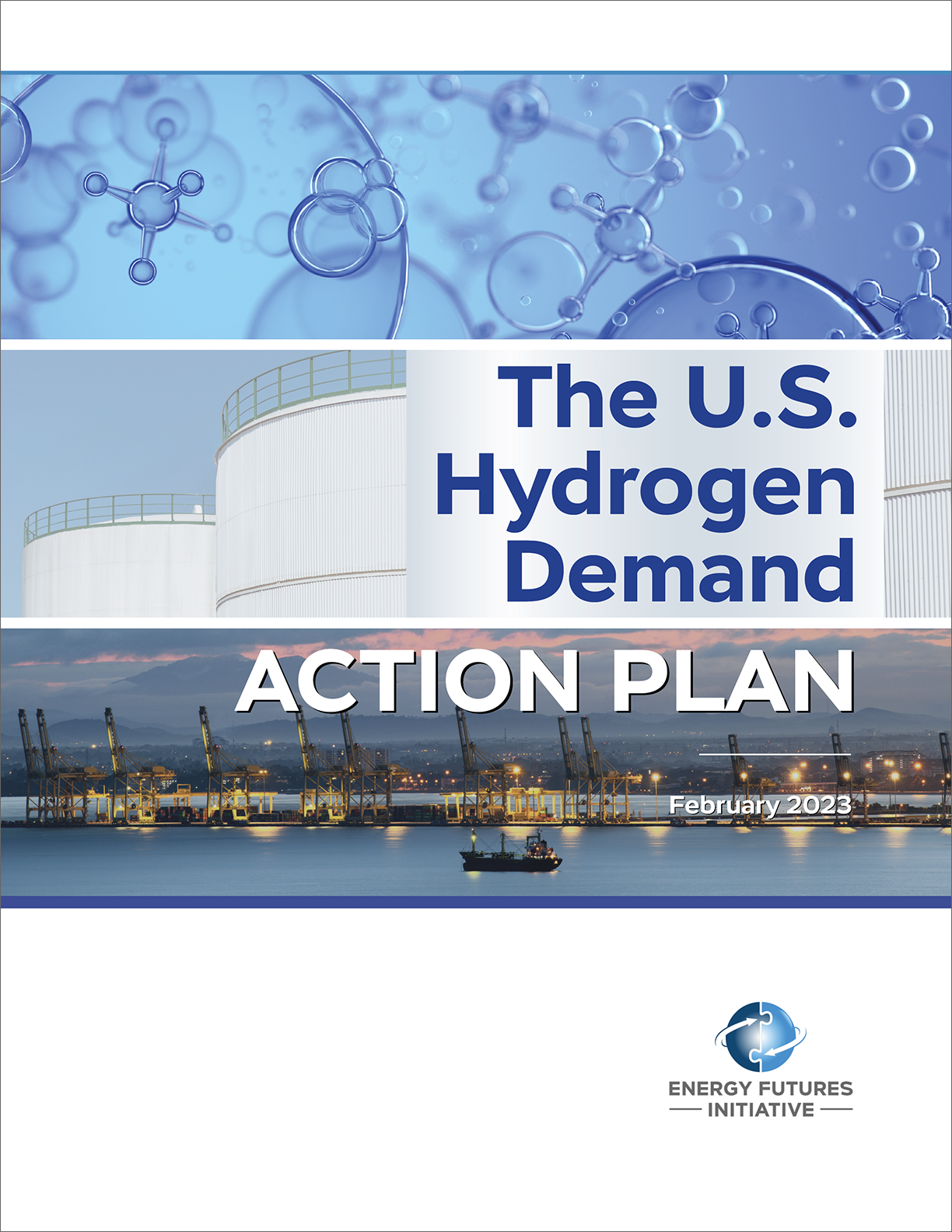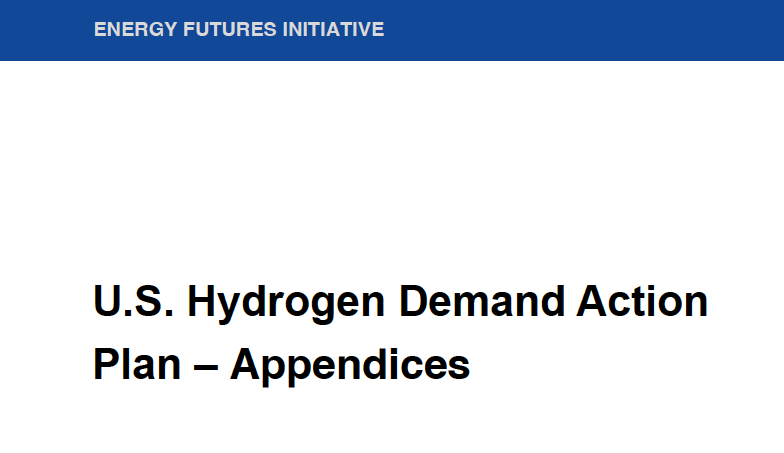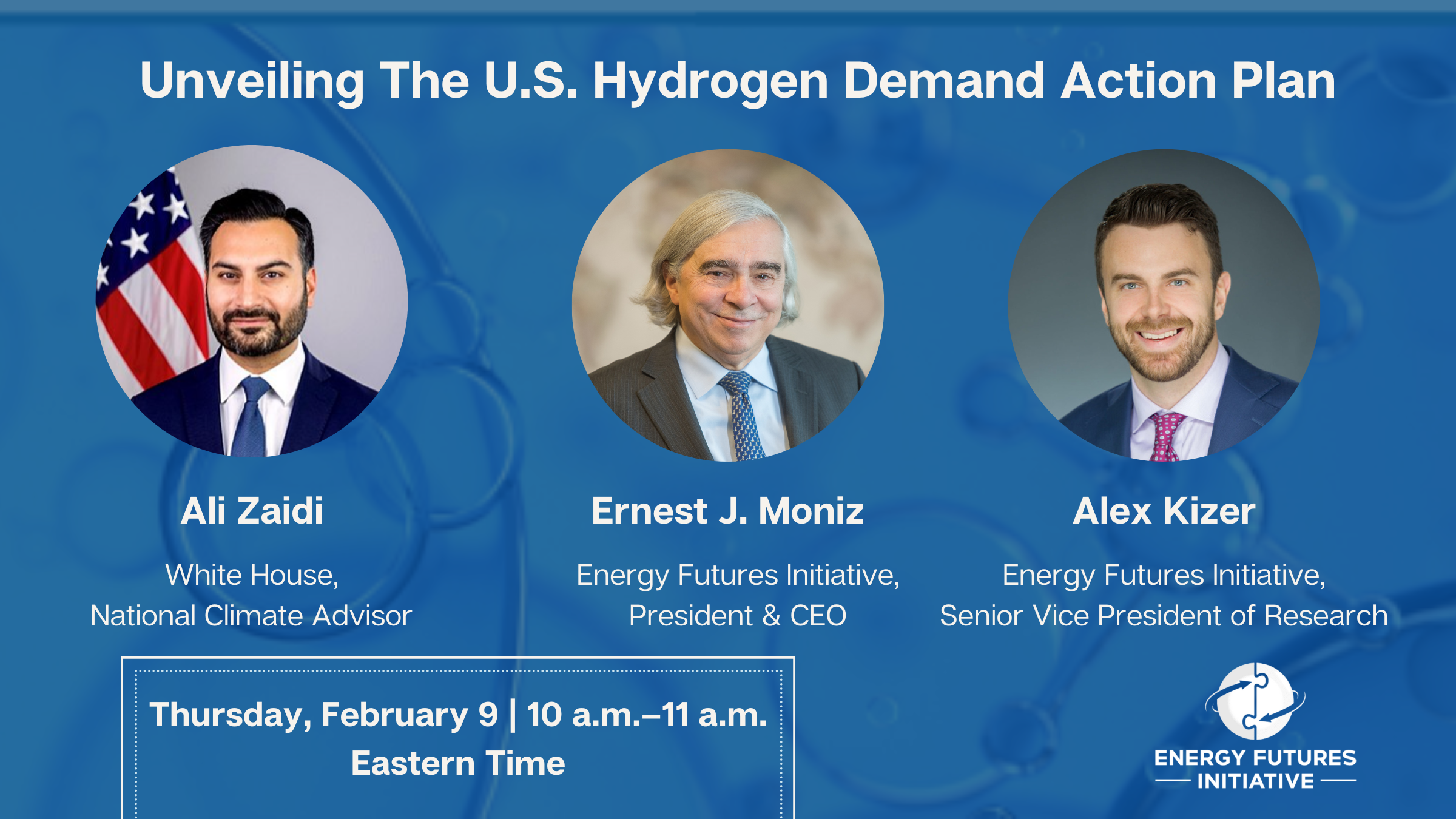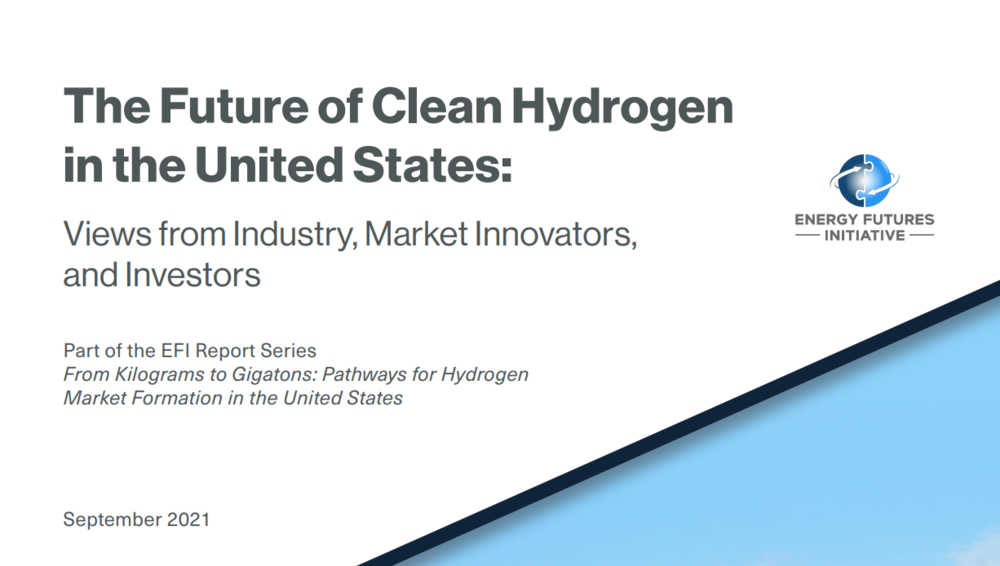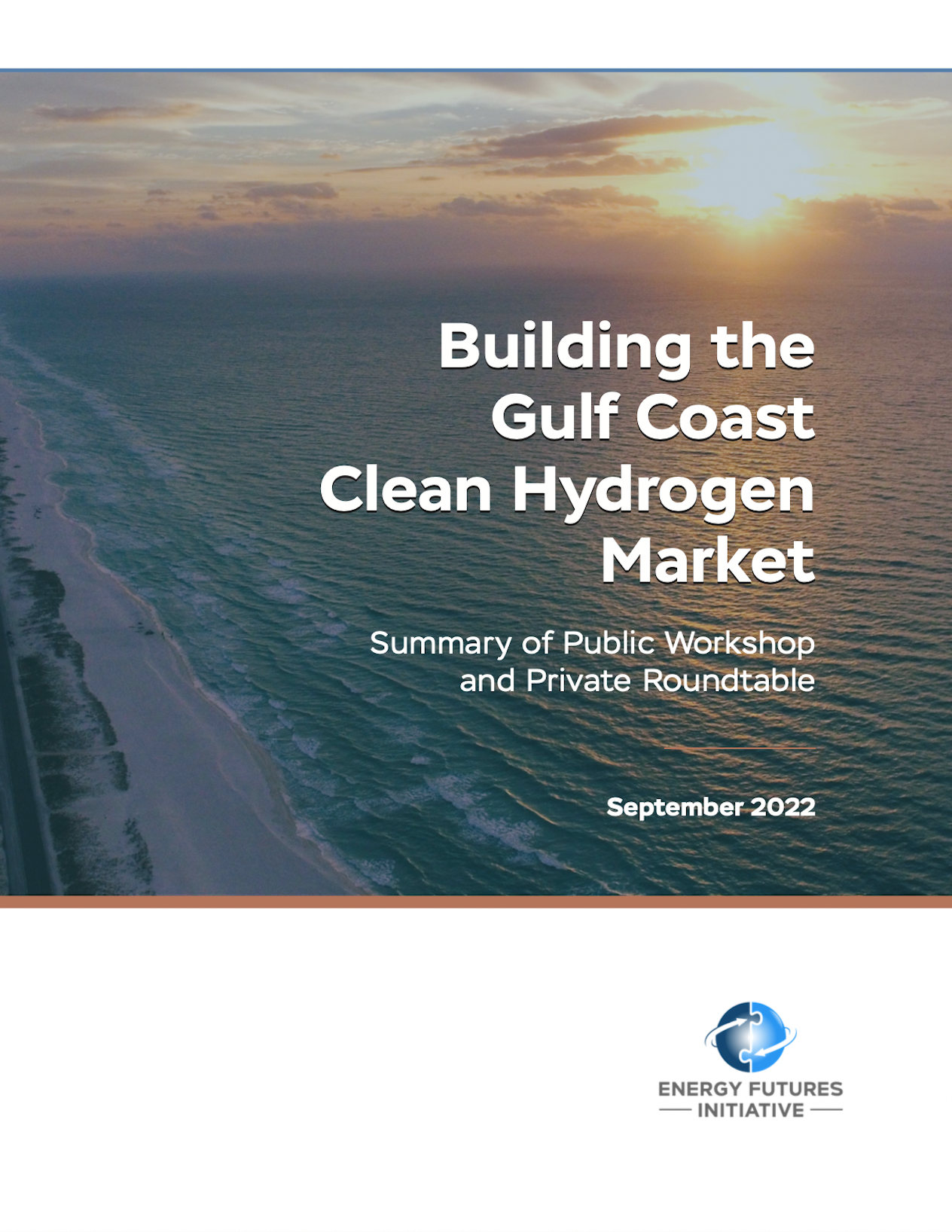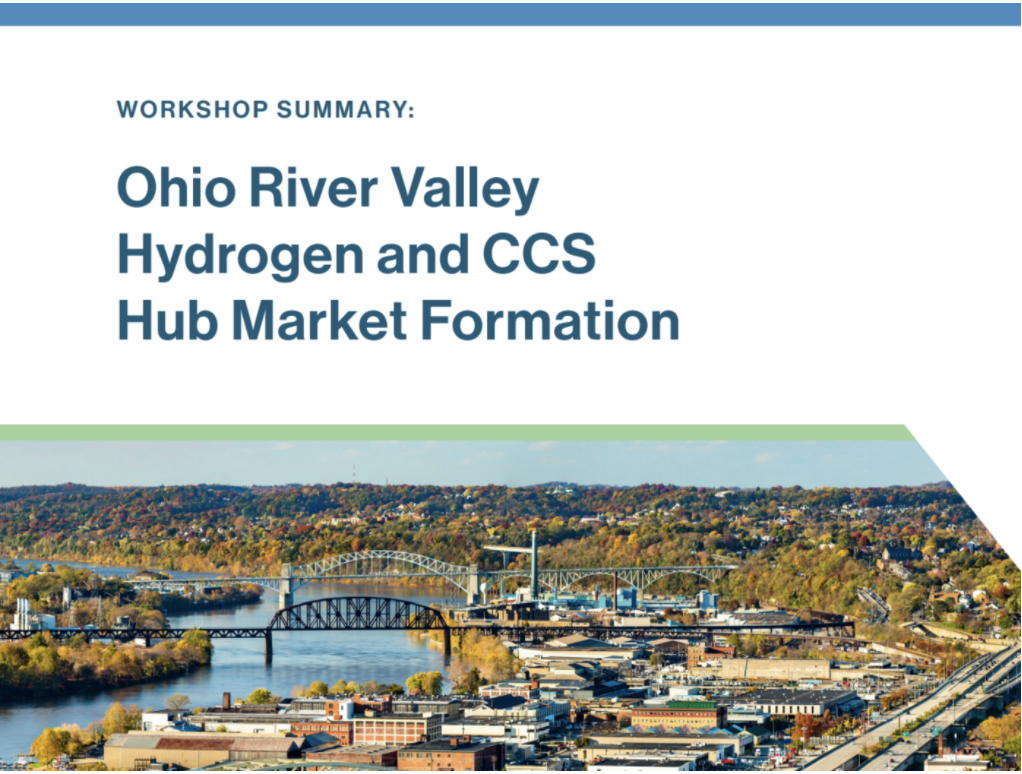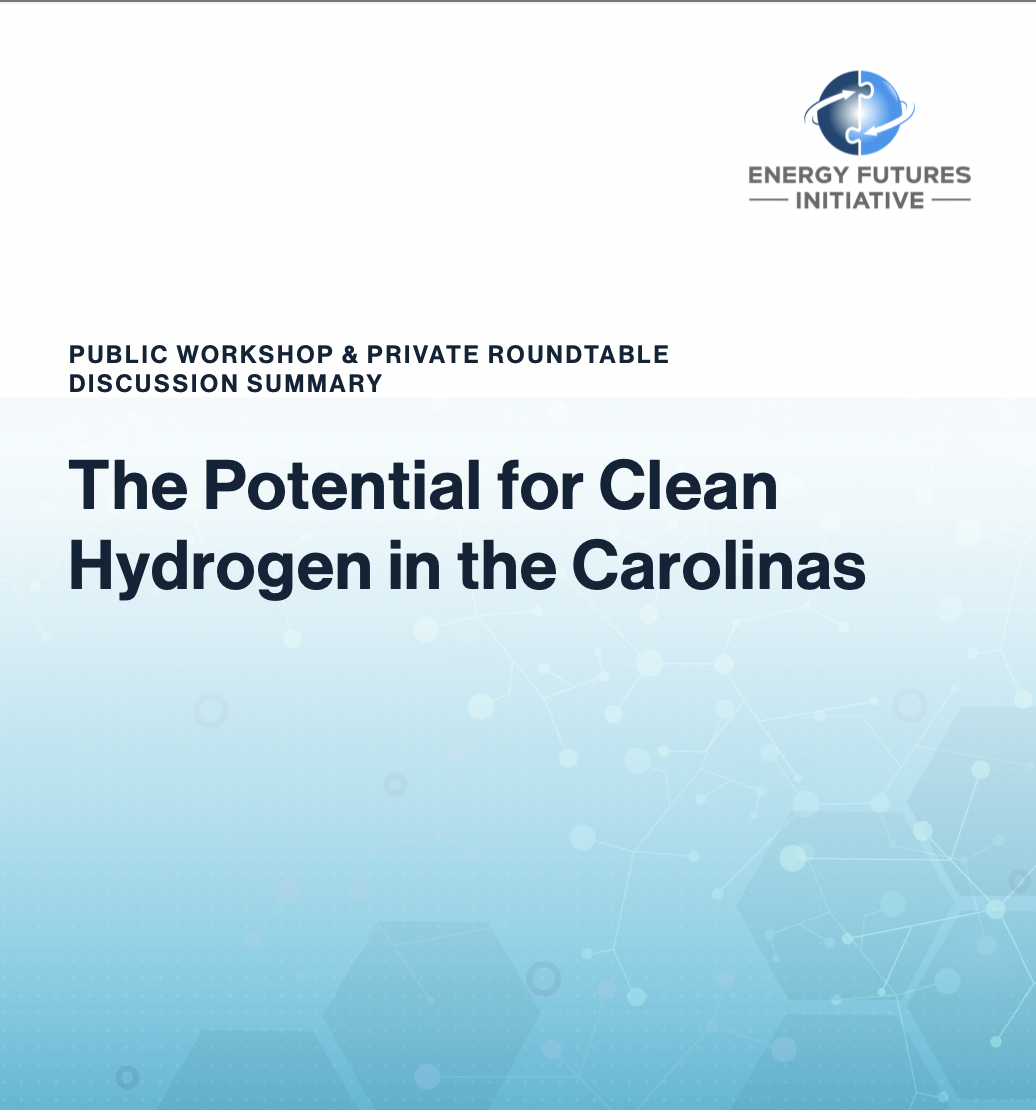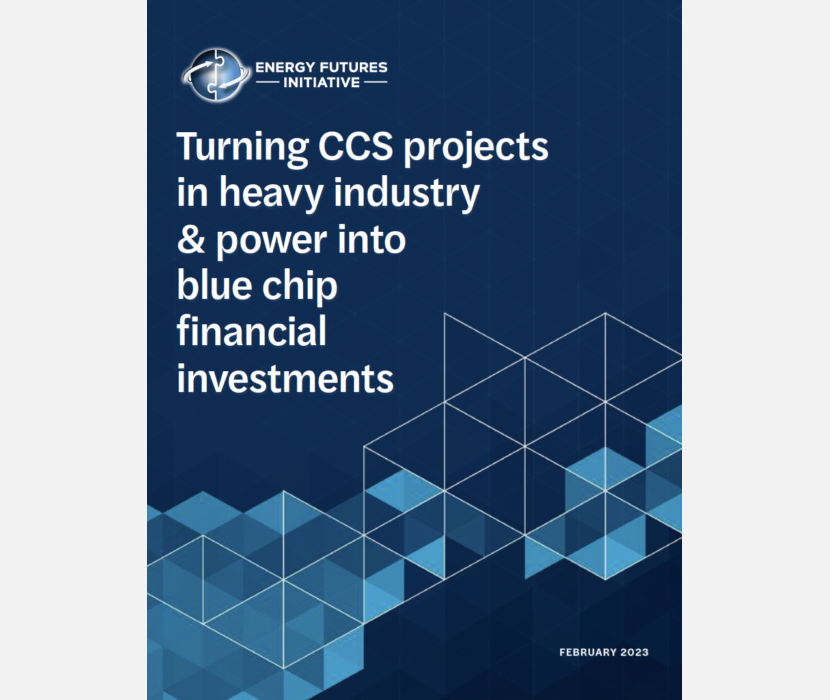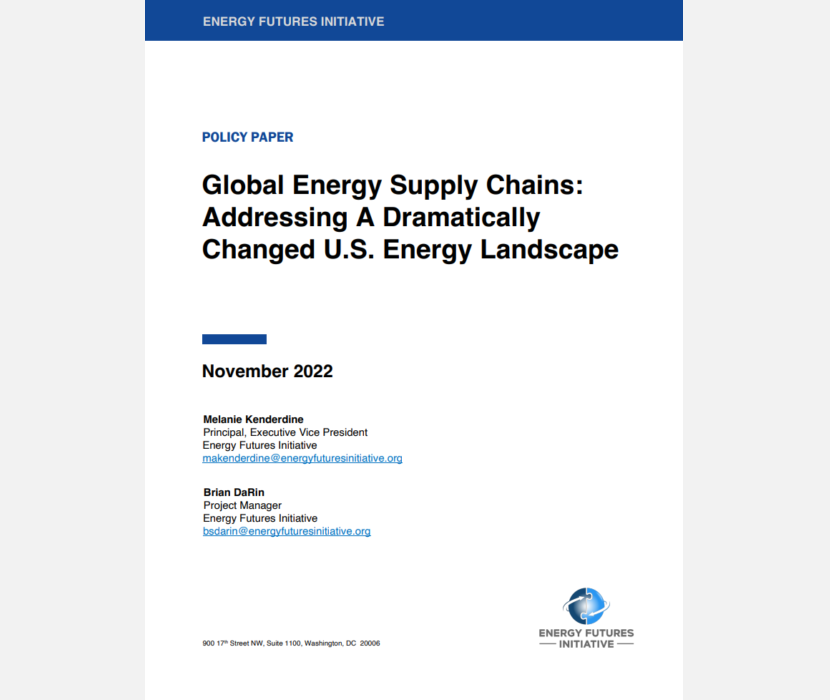Watch the recording from our webinar on February 9th!
The U.S. Hydrogen Demand Action Plan (February 2023) presents a pathway to rapidly accelerate hydrogen use across regions and sectors through new policies and industrial strategies, with a focus on leveraging regional hydrogen hubs as growth engines. Recently passed federal laws—the Inflation Reduction Act (IRA) and the Bipartisan Infrastructure Law—provide unprecedented clean hydrogen support and are expected to significantly reduce clean hydrogen production costs. This Energy Futures Initiative (EFI) study shows that additional measures are necessary to get from those cost reductions to a national, commoditized clean hydrogen market, and now is the time to take action.
This study is informed by two years of EFI research activities, including a study of U.S. hydrogen investments, three workshops with regional hydrogen hub stakeholders, and hundreds of interviews with thought leaders in industry, government, and academia. The study evaluates the current U.S. clean hydrogen landscape and introduces an analytical tool—the Hydrogen Transition Framework (HyTF)—to help policymakers and project developers consider a broad range of market-enabling conditions at the regional level. The study analyzes IRA incentives to gauge their potential impact on clean hydrogen costs by region and technology. And the study further assesses industries with near-term hydrogen demand potential (the most “clean-hydrogen ready”) and offers recommendations to advance their shift to clean hydrogen. Another focus is industrial strategies for stimulating hydrogen market formation, based on established economic frameworks.
The plan outlines the following actions to drive demand for national hydrogen market formation:
1. Deploy regional hubs as engines for market development. Regional hubs are one of the best methods for rapidly scaling demand, as they can allow multiple industries to coordinate closely, creating greater investment certainty for both producers and consumers. Congress should significantly increase funding for the U.S. Department of Energy’s (DOE’s) hydrogen hubs program, focusing on projects that enable regional network expansion. DOE should create robust information-sharing requirements for all hubs to access data and lessons learned. The governance plan for each regional hub should clearly define the relationship rules for hub participants and establish processes for new entrants.
2. Activate early investments for market-ready applications. The federal government has historically dedicated a small share (2.0% to 3.7% in the last decade) of energy research and development (R&D) to hydrogen. Since hydrogen R&D is too limited to know the best options upfront, successful market formation requires flexibility. For example, the U.S. Internal Revenue Service should develop a pragmatic and timely phased approach to issuing guidance on the 45V tax credit, and it should prioritize near-term implementation with the option to adjust future life-cycle requirements. The federal government should develop and implement hydrogen procurement opportunities to help achieve its own decarbonization goals and provide a platform for new demand. And the business plan for each regional hub should include provisions to coordinate cost management, employ financing strategies, and facilities hub growth.
3. Prioritize local and regional workforce development and community benefits in DOE’s hydrogen hubs program. 45% of the workforce in at-risk industries (because of the clean energy transition) are well-suited for clean hydrogen jobs. Each hydrogen hub should establish a goal for improving the overall quality of life for frontline communities. Regional hubs should incorporate and prioritize local economic and environmental safety in project selection and performance criteria. And the community and workforce plan for each regional hub should integrate community groups from the start of the hub development process.
4. Expand hydrogen research and development, as well as strengthen innovation capabilities. Hydrogen hubs can determine research priorities for clean hydrogen as they demonstrate new technologies, policies, and business models. Congress, DOE, and the national laboratories should continue to develop cross-functional centers of innovation, focused on decarbonizing industrial clusters. DOE should pursue new collaborations between U.S. and international clean hydrogen hubs. And each regional hub should develop an innovation plan to ensure that technology turnover is managed and there are opportunities to share valuable lessons learned between hubs.
5. Prioritize infrastructure permitting and U.S. supply chains development. Infrastructure for clean hydrogen hubs have siting, permitting, and operational challenges that must be overcome. The administration should work with Congress to develop a public-private partnership model for carbon dioxide storage management. The Federal Energy Regulatory Commission (FERC) should begin the process of regulating the blending of hydrogen into interstate natural gas pipelines, an important step for hydrogen demonstrations. Each regional hub’s infrastructure plan should ensure that permitting, partnerships with upstream energy providers, and frontline community requirements are met. And regional hubs should develop a credit trading system for managing hydrogen production and consumption.
Clean hydrogen is virtually absent in the current U.S. energy mix. However, the 374 clean hydrogen projects that are publicly announced (as of August 2022) have the potential to produce 2.2 million metric tons of clean hydrogen. This study formulates an action plan for going from technology cost reductions expected through IRA funding to a national commoditized clean hydrogen market. These policy measures that target hydrogen-ready applications can effectively use hydrogen’s unique attributes, while reinvesting in America’s workforce and rapidly driving U.S. market formation.
Supplemental Material
Related Content
(Share this post with others.)


